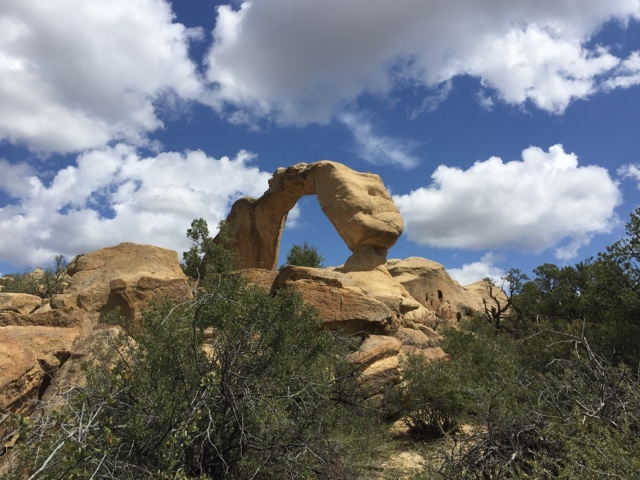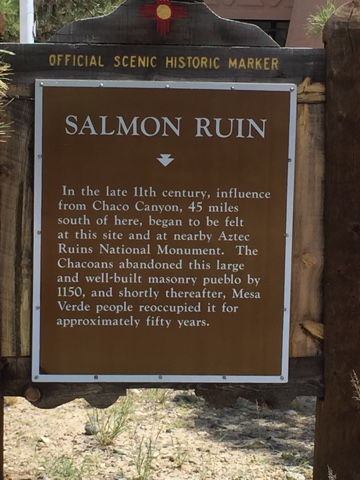Then we set off to find the Cox Canyon (Anasazi) Arch, billed as the most spectacular arch in the area. It didn't disappoint. The hike to see it is described as "moderate" but I don't want to try a difficult one if this is only moderate. There was some pretty intense rock wall scaling going on, and the trail was difficult to follow sometimes. We had to use new-found information from some other things we've been to see to find the arch. Learning about the hand and footholds carved into the stone at Mesa Verde helped, and hearing that other hikers will leave stacked rocks along the way to help you find the path was helpful too.
So we've got to get up on top of that cliff somehow.
There's the arch, waaaaaaaayyy over there... Now to just get to it.
There's one of the stacked rock formations, leading the way.
And we made it!
The view from the top.
Found a lounge chair!
One last look around.
Squeezing in a little opening in the arch.
Now to head back down. Bye-bye arch.
Good thing we had the stacked rocks to find our way back.
We climbed up what???
What goes up, must come down.
Yep, that's the top half of the climb.
One last section.
Enjoying a picnic lunch in the shade.
We decided we'd had enough rock climbing for the day, so we drove down to Bloomfield NM, to see Salmon Ruins, so named for the man who homesteaded at the property in the 1890's. No excavation took place until the 1970's. These ruins are a little different from the Aztec Ruins, as there is noticeable evidence of the ruins being initially built by Chacoans, and then altered and lived in by other native cultures.
Looking back up the hill at the museum and visitors' center.
We first looked at George Salmon's homestead. He used many of the building techniques that native cultures had hundreds of years ago. The sides of many of the buildings have vertical logs, filled in with clay.
Root cellar
Bunk house
This was cool! These are irrigation pipes, made from wood.
Then we came up to the ruins
This is where you can see the two different cultures represented. The original room was square. The later occupants, such as Mesa Verde people, rounded off the inside of the room to make a kiva. This was shown several times throughout the ruins. I guess they were the first to prove that you CAN put a round peg (room) in a square hole.
Look at the teeny tiny pieces of stone that fill in the area between larger stones!
All of the holes you see along the wall are where logs would have been to form the lower ceiling and upper floor. Most of the rooms we can see are partially filled in with dirt from hundreds of years of rain and wind.
One of the larger kivas.
The largest kiva in the central courtyard. The walls would have been much higher, and the floor much lower.























































No comments:
Post a Comment